THE BASSO LINE OF BAR BASSO
THE BASSO LINE OF BAR BASSO
Video Concept: Annie Markitanis & Giovanni Aponte Camera Director & Editing: Last Glaring Gleam Interview & Content Editor: Annie Markitanis unFLOP Production Music: Take My Heart Probably I would be very elusive, it happened before. Usually, I say that I am a bar owner. It really depends on the context and the conversation; If is someone that I meet while I am at Bar Basso, then I would be more comfortable. If it’s a neutral place, that has nothing to do with the bar, then it would be different, and I wouldn’t find it interesting to talk about work. That said, I don’t believe that my personality changes depending on whether I am at Bar Basso or elsewhere. After so many years of being at Bar Basso, it became a lifestyle, it is part of me. It took me a long time to learn how to coexist. Would it be fair to say that there is no Bar Basso without Maurizio Stocchetto and there is no Maurizio Stocchetto without Bar Basso? Well, life goes on both without Bar Basso and without Stocchetto. Bar Basso is a family business for more than fifty years. The place already existed in the 30’s. My father took it over in 1967 from the former owner, and then he worked, from 1967 until 2000. I joined the business, around 1977, and I increasingly started to work here; from 1981 I began to work more steadily. So, I have been working for thirty-five years, and I have always tried to continue what my father had done, while also trying to bring in my own influence in a very smooth way. All these years, we have given our own character to the place; one of the peculiar and interesting characteristics of this place is that most of the things that we are doing are things that had been done fifty years ago. Before coming to Milano my father worked in Venice at Cortina, so most of his experiences were achieved in the 50’s and all the cocktails that he was making he brought them to Bar Basso in the 60’s. So, most of the stuff that I am doing are cocktails that were very popular in the50’s and the 60’s but only at Bar Basso, because we have this red thread that runs from the 50’s up until today. If we had not continued working at the bar for fifty years, new people would have brought to Bar Basso new drinks, perhaps more “modern drinks,” and it would have been different. Neither better or worse, but still, different. Are you an Introvert or an extrovert? It depends; I am a bit shy, but when I get a bit more comfortable, I open up. What is the secret of your lifelong relationship with Bar Basso? At Bar Basso, day in day out, we continue doing the same things for fifty years now. It became like a ritual. When every day you do the same things, the same cocktails, using the same glasses, using the same bottles, although for some may sound very dull, it has still contributed to this continuity of doing things that have become part of our DNA. And then we have the world outside that comes to the bar, bringing the freshness and curiosity. So, I would say that the secret of my lifelong relationship with Bar Basso is a balance between doing things that are somehow related to tradition and in the meantime finding external stimuli, like the people that come to Bar Basso, that are gratifying, bringing and sharing their influence, contributing with their own sense of self. Our relationship hasn’t been like a lovey-dovey relationship, because the truth is, we had terrible times, there were times that I wanted to change things when I was much younger and so on, so it’s been a long love story trip. We had good years, bad years, but then the secret is to keep doing your best. Bottom line, I put so much energy in this relationship with Bar Basso, so why not continuing. And then it’s pleasant to see that it aged well... If you were to write an etymology about Bar Basso, what would it be? Classic with a twist… On October 13th, 2018, Bar Basso turns 50+1 years old. This is the exact same date when in 1967 your father Mirko Stocchetto - then barman at the renowned Hotel de la Poste in Cortina - bought Bar Basso from Mr. Giuseppe Basso. What do these 50+1 years stand for? It’s a remarkable achievement. The truth is that we never thought about the anniversary. As a matter of fact, we only realized that we were turning fifty in 2017, but we never made a big deal about it. We have always been living in the moment, and we were so intrigued about the everyday life, like a short span attention in a way, and somehow we never figured out that we would have lasted for so long. When actually the fifty years passed by, we realized that it will be hard and improbable that we are going to do fifty more years again, so we began to cultivate the idea of celebrating these fifty years of remarkable achievement. I wish to this partner of mine, very basic things: Stay In Business and Stay Healthy. That’s all one needs to get through fifty years because is indeed a miracle and it takes some luck. One needs to be in good health, and be committed to what you are doing to keep up for so long. And it was never taken for granted that I would have taken over this place after my father. If I had decided to do something else, Bar Basso, as we know it today, wouldn’t have lasted for fifty years. There are very few places that have kept working for fifty years with the same family. The heyday of Bar Basso was its very start because it was something very new in the city and it was unique at that time. Paired with the booming economy, and the generally positive outlook that defined the city’s people, success was a very probable outcome back then. Despite our tendency to romanticize the past, there were hard times also. I would say that those great years lasted up until the 80’s. Then the 80’s were a rollercoaster, but they were fine. Then a lot of other places opened up, and different contexts came along, so of course, it was like a cake that had been shared in many slices, so our slice got smaller and smaller. However oddly enough we survived, without ever changing a bit what we were doing; despite other new places doing South-American cocktails or having Dj sets, we kept doing what we knew to do best. There is no use to try to do something that it’s not your cup of tea, and where you wouldn’t be comfortable in. We chose and to keep on doing what we felt like it was the most natural thing for us to do and what we thought that represented best who we are. Looking back at those days I think we accomplished the notion that discovering and investing in one’s identity is very important. And people might like you or they may not, but it’s essential to have and sustain your own identity because this has allowed us to be more focused and clear as well as more determined about what we were doing, and why. If you like it fine, if you don’t like it maybe you are not supposed to, and that’s fine anyway. There is no sense to change to please others, especially when you have the awareness that you are playing your part in the best possible way. Or maybe you have a long vision of how this profession should be done, so we have kept following this vision faithfully. In your opinion, how important is for one to have an identity nowadays? The fact of belonging into something, and being part of a tradition and keep investing in this tradition, is enough to grant you with a strong basis in what you are doing. It is a stepping stone towards progress and self-growth. Having an identity is vital as it grants you with knowledge, it tells you where your roots are, and it allows you to feel safer and more confident in what you do. Giuseppe Basso opened up Bar Basso in the other side of the city, in 1933, in Via Beatrice d’Este, and he kept this place until 1945. Then something happened and unfortunately had to close down. After World War II, Giuseppe Basso opened up in this current location in Via Plinio. My father, Mirko, worked in hotel de la Poste in Cortina, for twenty years; then he got to the point that he wanted to open his own place. When a liquor supplier, heard that my father was seriously considering leaving Cortina, and open to going somewhere else to open his own place, he said to him: “Go to Milan and go see Bar Basso, because the owner is getting older, and his son isn’t interested in taking over, so it can be a good opportunity…” My father followed his advice and came to Milano, and eventually, he negotiated to take over the place. It was exciting that all of a sudden we found out that we were moving to Milan. We had no relatives and no tights whatsoever here. When the family first came here in 1967, the bar was pretty much as it is now. That said, the one side of the bar, the room had a more rustic vibe to it. There were these carriage wheels on the wall and a plow, and there was a clash between the two ambiances. This difference between the two bar’s spaces, became very interesting once the bar began to grow popular. It’s a real mystery to figure out what makes things work or what makes things right. It’s this alchemy that is really hard to define. The thing I love the most about the place is that we have people from all walks of life; this place holds the stories of many people. In this place, certain people experienced some exceptional moments, like a marriage proposal. Few blocks away from here there is the University of engineering, architecture, and medicine. So, we have generations of veterinaries, medical doctors, professors, students, people from the show business, politicians, designers, and artists, that have been coming here since the 50’s. The Bar Basso community is composed by so many worlds. It’s interesting because it s not just the place for designers or just the place for politicians or doctors, but it’s everybody’s place. We would like to think of it as the place that has a glamour part of it, especially now when fashion, design, and art are involved, but generally speaking, we love the democratic aspect of it. Another thing that has contributed to the bar’s success is the continuity of the people working here. One of the things that we really believe in is to have a strong and solid relationship with the people we work with. Usually, when someone comes to Bar Basso to work for two to three years, it’s very possible that he may end up working here for twenty to twenty-five years. We like the fact of having the same people working here because this allows them to develop a relationship with each customer. This is also reflected in the continuity of the customers coming here. We have customers who come every day for the last twenty years. Each time there is no need to ask “Hello sir, what would you like?” I mean, the barman already knows the client, he knows what the client drinks and what he likes. It’s essential for clients to be recognized; if these people who have been coming here for so many years cannot find a counterpart where they are known and acknowledged, they won’t feel at home anymore. Everybody needs a place to consider as a second home. Especially today, when conformity has labeled everything. This is the whole notion of client intimacy. It is very human and sincere; I mean sometimes the Bar Basso waiters are very professional, direct and no-nonsense, but they are very spontaneously and genuinely lovely persons. And this is the interesting point. Most of the people who made this place are dead; they used to come here in the sixties, and by now they would have been like one hundred and twenty years old. So, it’s scary, also because you get affectionate to people and it’s like losing a member of a family. People that we were used to seeing year after year but in many cases, their sons and nephews keep coming. So again, there is this element of continuity… For 35 years, you have been actively engaged with Bar Basso, and through this relationship, you have come to meet thousands and thousands of people, from the creative realm, and not only: Could you please give me your Top list of friendships that were born through this bond? There are so many characters; some people have become very dear friends of mine; one,for instance, is a gentleman called Guido, another one is Angelo. Some of them are not here anymore… There is also Pino, who is an excellent musician, a bass player who played with many internationally established musicians. Another friend is a medical doctor, an anesthesiologist. So many people influenced my life in so many ways. Usually, these relationships are born through a strange alchemy; music is often one of the vehicles that allow us to start a conversation, and take it on a different level from the bar level; traveling can be another common link. Or maybe we would be talking about cocktails, and I might mention a place that catches their attention, and it starts from there. It has to do with the typical conversation between a bartender and a customer while making a simple order; this can lead to that sparkle that lights up some interest and consequently opens up the door to get to know the person. This is one of the most significant paybacks of this profession, the fact that you can meet interesting people from different environments, that would be very hard to meet elsewhere or under a different context. Working behind the counter we have the privilege to get in touch with everybody because I am the person that one has to relate to if you want to have something to drink; I have the privilege to be in this position and have people looking for me. So, just to break the ice, I get to make the first effort, take the first step to get to know the person. Then eventually things might develop and evolve to something more unique and substantial. A lesson that the night taught you? Working at night is a blessing and a curse. That said, it is part of my biorhythm. I always liked to stay up late, maybe because I grew up in the bar and I got used to a very atypical schedule. I remember that if I woke up at three in the morning when I was a child, I would find my mother in the kitchen, and my father doing the counting; the house at three in the morning was more lively than during any other time of the day, so I never associated the night time as a time of silence, and darkness, because at my home that was the vibrant part of the day. Ironically, if we received a phone call at one in the morning, it wouldn’t had been a big deal, but if we got a call at nine in the morning, we would be worried because everybody in that environment knew that we were sleeping at that time. It’s kind of interesting for me to work with anti-social hours. In the night everything is more faded; there is less noise, less traffic but it is still intense. It’s nice to be able to finish the working day, and come back home at three in the morning, to watch a movie, read something, or answer to some emails, while enjoying the stillness. This is the time when I can truly enjoy my privacy because during the day everything is so fast and doing what you want is a challenge. Considering that there is a lot of adrenaline in this job when I go home at two in the morning, I don’t just switch off, it takes a while, so, the nocturnal setting provides me with the ideal context to unwind. I also love the fact that during night hours, especially in the 80’s and the 90’s, I could come across all kind of people, and sometimes it could be a little dangerous but at the same time, it was a way to learn how to keep my boundaries, and respect the boundaries of others. I remember that people were behaving very politely because you never knew who you were dealing with. BarBasso has become a design-world institution during the annual furniture fair; can you share with us a memorable Salone Del Mobile night? I remember this Salone Del Mobile in 1986 or 1987 when the design community was composed of British and Swiss designers, and it was gradually growing. Back then the Salone took place in September, and very few people knew about it because it was not that much publicized. Still, it was very lively and at the same time sophisticated and intimate. There was a group of designers, such as James Irvine, Marc Newson, Thomas Erickson, Jasper Morrison, Stefano Giovannoni, Thomas Sandell, Peter Hallen, that in those years they had become verysuccessful and their popularity was on the rise. In 1999 they decided that they wanted to have a secret party; It was decided to invite only a few people: A few manufacturers, like Giulio Cappellini, along with some other designers and journalists. The thing was that some of the designers had a lot of money, but others didn’t have much to invest in the party, so, we decided that each one of us was to invite ten guests, and to each guest, we were to offer two drinks. I made a political price for the cocktails, and the event was about to start, with officially one hundred and fifty guests. At the time, Marc Newson and Jasper Morrison were already very famous, so, all of a sudden, after midnight, lots of taxis started approaching the bar, and each taxi carried four to five people. In the span of only half an hour, Bar Basso was filled with more than one thousand people. It was frightening because we had no booze, we had no glasses, and we were understaffed as it was meant to be a private secret party for only one hundred and fifty people. David Chipperfield was here, Simon Le Bon from Duran Duran, so we had all these amazing people and the whole place was packed to the point that my father got sick and ended up to the hospital, something I didn’t realize up until someone told me that they saw my father been taken by an ambulance. I couldn’t leave the bar, I didn’t know if my father was alive or dead. It was only at six in the morning when I found out that he just had a panic attack and that he was Ok. That night was a turning point in the history of Bar Basso. Bar Basso as the place-to-be: In your opinion, what is the “fil rouge” amongst the Bar Basso’s fashion, design and art devotees? Since I was twelve years old, I have been surrounded by people from the creative industry. Growing up I realized that there were a lot of links connecting this community. Bar Basso wasn’t established overnight as the place-to-be. Actually never thought of it like that. There has never been a strategy or a plan to turn Bar Basso to the hub for creative frivolity, also because it was long before the internet era, and I wasn’t into PRs. Somehow I became my own PR, and I started to get to know people, I began to gather them, and those people knew other people some of whom were living abroad or in other cities of Italy, and without even noticing I ended up with this valuable and delightful network of people who were connected through creativity and also through their love for cocktails. The exciting thing about cocktails is that every time you make one, you need to start from scratch, so every time I make a cocktail is a sort of like creating a little artwork, and that’s really appreciated in the creative community - the fact that the cocktail making involves a technique that allows every time the replication of the same color and the same taste. There are specific steps that resonate with the creative people; as a matter of fact, a lot of designers consider me as one of their peers. The fact that we are going almost to the third generation of designers that like to come here, considering that most designers who became famous in the mid-80’s are now around sixty-five years old, and they don’t come very often anymore, as they are less inclined to indulge to nights out. However, their nephews or sons and their friends are coming. So, it’s vital for us to have the creative crowd joining us, also because they motivate us to perform at our best as they are not people that are easy to fool. They know exactly what they are looking for and how they want it. They are metaphorically the northern star of Bar Basso. In every relationship, there is a natural form of exchange; a balance of giving and take. What do you think Bar Basso gives to its customers and what do the customers give to Bar Basso? It’s absolutely an exchange of energy. Bar Basso gives to customers a place where they can feel at home. With the creative clientele, I remember that the moments that were more intense were especially the lock in moments that we had and have. When I say lock in I am referring to the moment of the night when the bar is closed, and everybody leaves except from four to five people, maybe ten, and you start talking as if they are all invited in your home; this creates a lot of intimacy. I don’t do this very often, because I like to finish the day and close the bar, however there are sometimes, which are considered special occasions because maybe the conversation is interesting, maybe there are some gallerist and some artist or some manufacturer with a designer, and there is an overall special energy, that I would just break the protocol and decide to stay longer. That’s very pleasurable, because people are connected through a relationship that invites them to carry on the conversation; so the effect of having this little extra available time at Bar Basso when the bar is closed, is entirely different from the one can get at a restaurant or another situation; it becomes like a stolen moment when one can dig more in the conversation within an informal setting, and this changes a lot. For instance, I have quite a few journalists friends, and they told me that the interviews they do during the Salone nights at Bar Basso are totally different than the interview they do to the same person at a fair, at an opening or at a press conference. This is because when a designer or an artist is at a press conference, where the setting is so formal, the conversation can end up being boring. On the other hand, when you find the same person at the bar at two in the morning holding a glass on the one hand and a cigarette on the other, the conversation changes. They might even say the same things, but the approach is more human, looser and down to earth. How would you describe Bar Basso’s interior atmosphere? The bar is in a way a mix-match of different styles, and I grew up accustomed to it because it already existed; it’s unusual the way that it’s divided into two different ambiances. The part that I prefer the most is the one that is more formal, however, if the whole place were to be defined by this formality, it wouldn’t be Bar Basso, it would be a different place. I like this “Oh well, what the heck” attitude of having two different setups. The wood, stainless steel, the leather upholstery, and tapestry that inhabit the interiors, all aged well, and this doesn’t happen very often. Since the opening in 1967, Bar Basso’s interior design has remained intact; it’s only this year that Bar Basso’s “internal world” was joined by a new light installation, created by the high-end interior design Canadian firm Gabriel Scott. How was this collaboration born? It happened by chance through a mutual lady friend from Venice, who lives in Miami. I saw her last year, and she told me about this friend of hers that would have loved to have an installation at Bar Basso for the occasion of the Salone Del Mobile. So, eventually I got in touch with Gabriel Scott who I didn’t know, and in December they flew to Milan and wanted to have an exposition here because usually during the Milan Design Week we have two windows that we rend to companies and also we have an event. And this is a smart way to advertise a product. Because it’s true that Bar Basso is not a fair or a showroom, but it’s a place where all the creative crowd comes, so it’s inevitable that it’s going to be seen by everybody. So, I met with Gabriel Scott, and at the beginning we planned only to have an installation of the two windows, then we hit it off quite well, and thus they suggested a plan B, which was to have another installation here; he showed me some renderings he had prepared of these lamps, and I liked the idea. Then they came here a few days before the fair and made the installation and while they were making it, I thought that it was nicer than what I had expected. During the Salone the feedback was positive, people were curious and were asking about it. Some other people didn’t even notice the light installation, which was a good thing because it meant that it blended very well with the rest of the Bar Basso habitat. When the Salone was over, they asked me if I preferred they dismantled, packaged and shipped everything back to Canada, or if I prefer that they leave the installation for fifty years at Bar Basso. I went for the latter; we were happy, they were happy. Many established designers told me “Maurizio do not ever change anything here,” because all the flaws are also interesting, and it doesn’t have to be perfect. And what is fascinating is that some of these designers designed some of the most important objects we have today, from mobile phones to airplanes, from hotels to restaurants and chairs. Tell us a bit about the drinking culture that your father, Mirko Stocchetto, brought from the Cortina in the Lombard capital, starting from the late 60’s… Back in the day, the Milanese people didn’t know about cocktails. But their curiosity drew them to want to try. In the beginning, I remember them coming here and ordering a cocktail in a sort of intimidating way, but then they gradually got more acquainted and comfortable with the whole cocktail notion within a bar setting. Even in the bar business, like in many other Arts, or in music, sometimes experience is passed from one generation to another. My father, for instance, learned from another bartender that was much older than him, after World War II, and I learned from my father, and my father also learned from Mr. Basso who was a very remarkable guy, and we were fortunate to get to know him for a few years. How about the whole story about the invention of the cocktail-icon Negroni Sbagliato (i.e., the Wrong Negroni)? For who was it made for? It was around the early seventies when my father mistakenly came up with the Negroni Sbagliato; It was a simple twist from gin to prosecco. It was probably made for Gianni Caratti, who was a car mechanic. Your art of cocktail-making is a virtue inherited from your father - Can you share with us a secret about cocktail - making? Similar to piano players, the art of cocktail -making is all about daily practice, plus a dose of creativity along with some knowledge of the properties of the ingredients, which in consequence allows you to master the right combinations. How many cocktails can one try at Bar Basso? What’s your favorite drink/cocktail? We have more than five hundred cocktails at Bar Basso.I like to drink Martini, Old Fashioned, Bloody Mary, Champagne, Sbagliato; mostly old-school classics. How is today’s Bar Basso’s local and foreign clientele different and/or similar to the Bar Basso audience of when you first started? When I think that I have been working here for more than thirty years, is kind of scary but at the same time is fun because you see how society changes. The bar per se hasn’t changed that much, but the world outside, has changed a lot over time; It has changed in so many ways, especially because now it’s much more international than it used to be. I think in the 80’s, when fashion became very popular, a lot of designers from all over the world, decided to move to Italy, especially in Milan. In the past, the Milanese clientele was very established, and it was not that common that foreign people would come to Milan. From your experience, in what ways has the Lombard capital changed over the years? The city changed dramatically because until 2000 it was a very industrial city. Things were designed and produced here. If you were driving from here to Monza, you could find a lot of steel industries, and also there was a very proud working class. Then all of a sudden there was a big crisis in these industries, and Milano tried to become the city of communication. Then there was the crisis of the printing companies, and Milano somehow reacted and caught up, becoming a place for communication, especially after the EXPO, where food has been the central theme. So now Milano is the place where ideas are perceived and where design, fashion, and art flourish abundantly. Compared to other industrial cities, such as Manchester, Milano has been definitely luckier. Best advice you have received? The best advice I have heard, because it was not addressed to me, was: “If you have nothing to say, shut the fuck up.” It is very basic and simple stuff, which I follow, because especially in this line of business unless you want to fight if I have nothing to say, I say nothing at all. In this fast-changing era, is there anything that you are nostalgic for? Today’s crowd is much younger, compared to the past; in the 70’s and the 80’s we had lots of people coming here in their seventies and mid-seventies, and they were having lots of fun. I have always been fascinated by the mentality of these people as they were getting older but still wanted to hang around with others and enjoy themselves. Nowadays, you do not often see people in their seventies coming to the bar. Older people don’t feel at home anymore when they go out at night; this is partly due to how the lifestyle has changed and how they are more concerned about health and also because the world is changing and it has become much noisier and less friendly for these people, people cannot talk over the loud music. Even the fact of how social media is changing the way people relate and how they move around. So, this is what I miss; I miss all the conversations and the sharp view that these people had on things. Just like in the movies, when you had Frank Sinatra, with a red pack and this bunch of people. I can remember when twenty years ago I used to go to Plastic after work, and there was a great mix of people of all ages, and that was disco, and it was loud music, but you could see people like Elio Fiorucci and Anna Piaggi. Now, when I go to Plastic, once and a while, I am the oldest person in the room. I believe that this is a significant loss. Original is… Original is hard to define. How original is original? If we are talking about original in the sense of unique, I would say that is tough to find something unique at this point when there is already so much stuff. I cannot think of what we may need now more from what we have; there is a general saturation, and the pace is getting shorter and shorter because every year you have to find something new. The same thing goes for cocktails - It’s difficult to explore a new taste because all the paths have already been somehow explored. So, the idea is to find something that might work in this very moment, it doesn’t mean that it has to work for too long, and try to figure out, in the whole realm of possibilities, the one thing that in this very second can suit you the best. This could be a little way out. I am personally more into details and trying to find that little something that gets me curious, rather than the whole picture. There was this group in San Francisco called the "Tower of Power,” and one of their songs was: “What Is Hip”: “ What is hip, Tell me, tell me, if you think you know, What is hip If you're really hip…” The thing is you then you get in a hip trip, and you try to be hipper than hip, so it’s an ever ending story, it’s a loop, and then when you find what is hip, shortly after it’s already passé. So it’s much better to stick with what makes you feel comfortable, and if it’s not hip, sometimes you have to be patient and wait for a while because also the timing is important. Take for example all those beautiful things that were made in the past which didn’t become successful because they were too much ahead of their time. So it’s also being able to wait, although it’s hard to know when is the right time to launch something. I remember when in the early 80’s I used to drive a fantastic Volkswagen car; the same car became very popular after the movie “The Witness” with Harrison Ford; the timing is crucial. Your last visit to an exhibition? The last exhibition I have been was UNIQUE AND REPEATABLE. Art and the Industrial in the collections of Massimo De Carlo, at Triennale di Milano. I loved it because it was not a traditional exhibition, but it was an exhibition of his private collection incorporating more than 100 works and objects that the gallerist has collected during his travels around the world. There were Weimar Republic ceramics, and the selection of Alighiero Boetti’s embroidered text works. I was also fascinated by the posters made for exhibitions, cultural events and political gatherings, created between the 1960’s and 1990’s by the graphic designer AG Fronzoni. Overall, I was very impressed by how dedicated and passionated De Carlo was, as well as by the meaning and sentimentality involved in this act of collecting. What is your favorite thing in your home? A lamp by Artemide Tizio from 1972; it is precious to me because it was a gift that my parents gave me when I was twelve years old. I still keep it on my desk, hopefully for many more years to come. Three things you couldn’t get through the day without? A cup of Moka coffee, shaving and listening to music. What’s your relationship to music like? Most of the music I listen to is under the Jazz umbrella: Jazz, Rock n’ roll, mainly mainstream, and a little bit of electronic but not that much. I still listen to the same stuff that I used to listen back in the 70’s. I was a very lousy soccer player, so I used to go to play with my friends, but after a while, I got bored, so I went to the record store; the owner of the store was a customer of the bar, so she allowed me to stay there and listen to all the records. I grew up with an amazing musical taste for a child, then I lost it, or I didn’t develop it, but I still have great memories. Then I went to San Francisco that was also a very musical city, where most of my friends were related to music especially in the late 70’s and early 80’s, until the early 2000’s. Relationships are… Relationships are Vital! Personal Success is… I think personal success Is being satisfied with doing the same thing every day for a long time. Beauty is… Beauty is everywhere. If you could change one thing about yourself, what would it be? There are so many (he smiles). Maybe to be less picky and more decisive. How do you envision Bar Basso twenty years from now? I have no idea how the city will develop because part the Bar Basso’s luck is very connected to the fate and heart of the town itself. If Milano continues to be a welcoming city, then I believe that Bar Basso will also remain on its successful path. Bar Basso is very much related to the city life it inhabits. I hope that the trends will not change and that everybody will not want to move to the countryside; we need a very urban lifestyle to perform and serve our drinks to promote our approach to the local culture. So, we will have to wait and see…





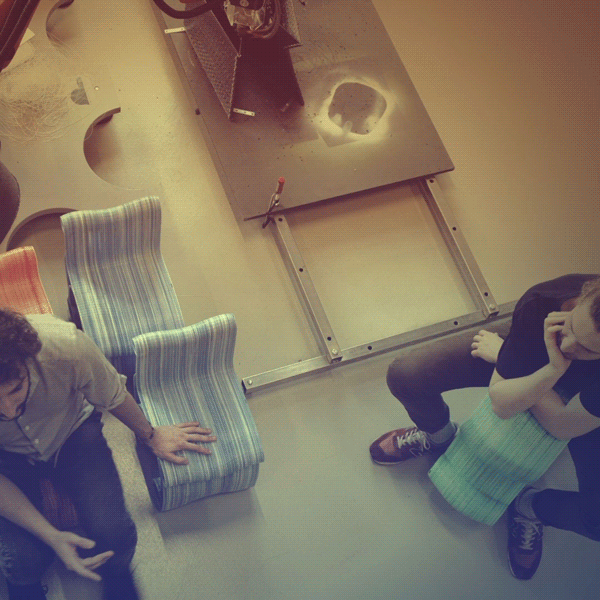
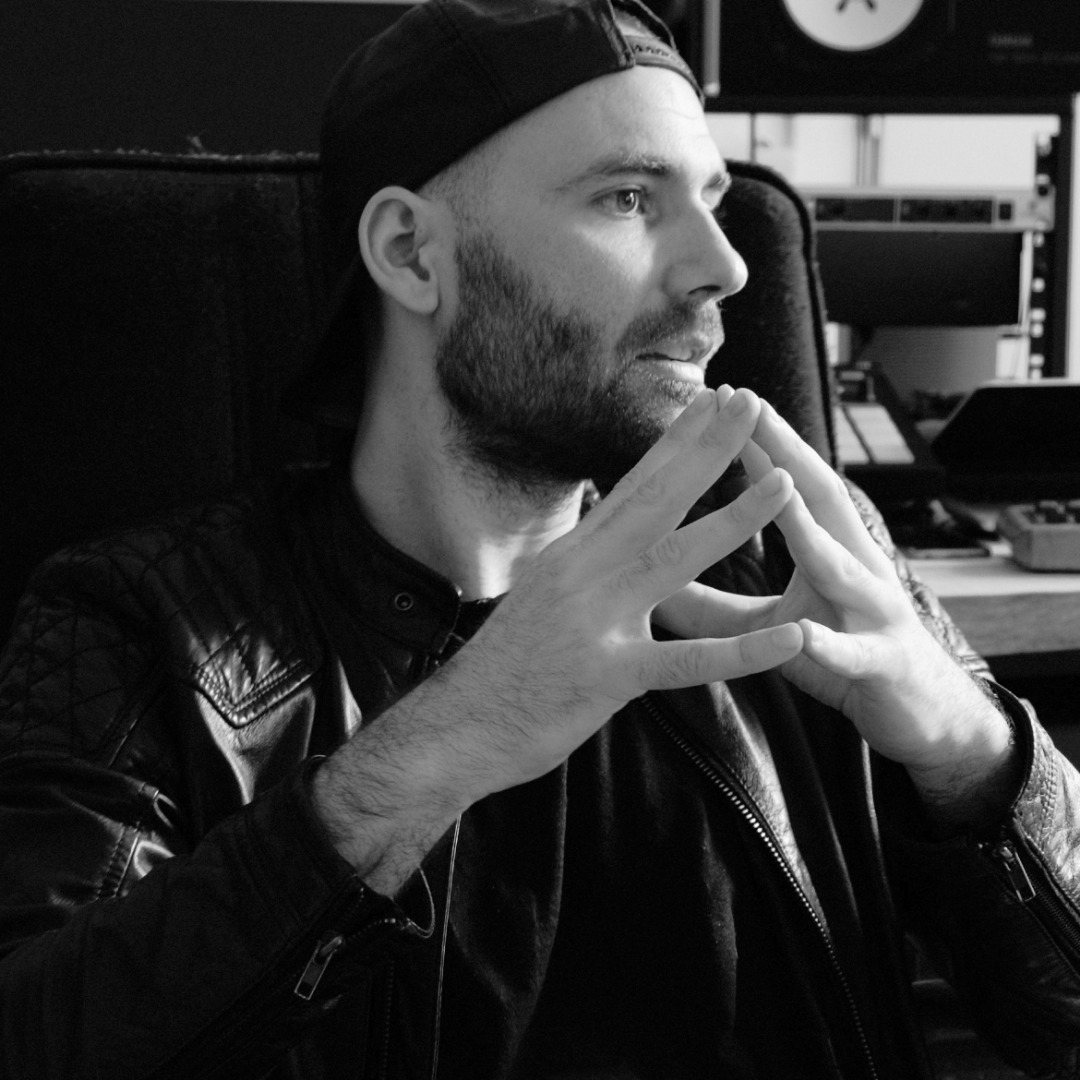
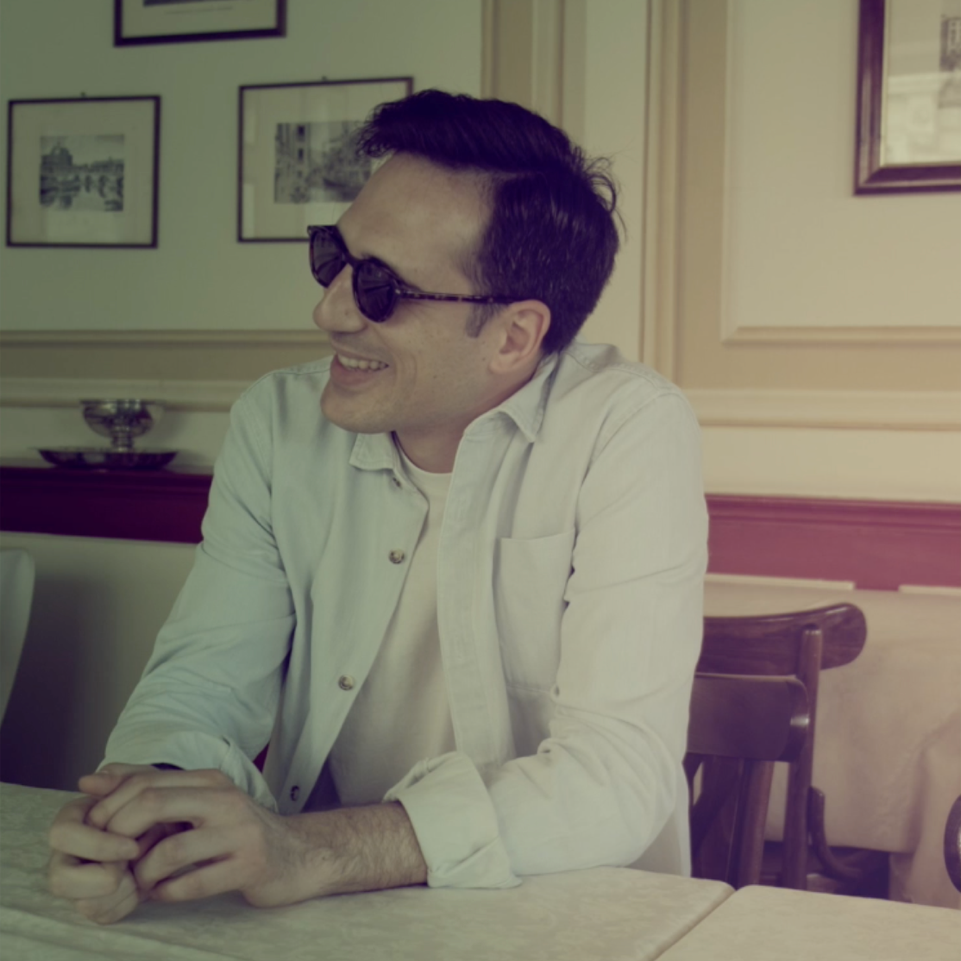
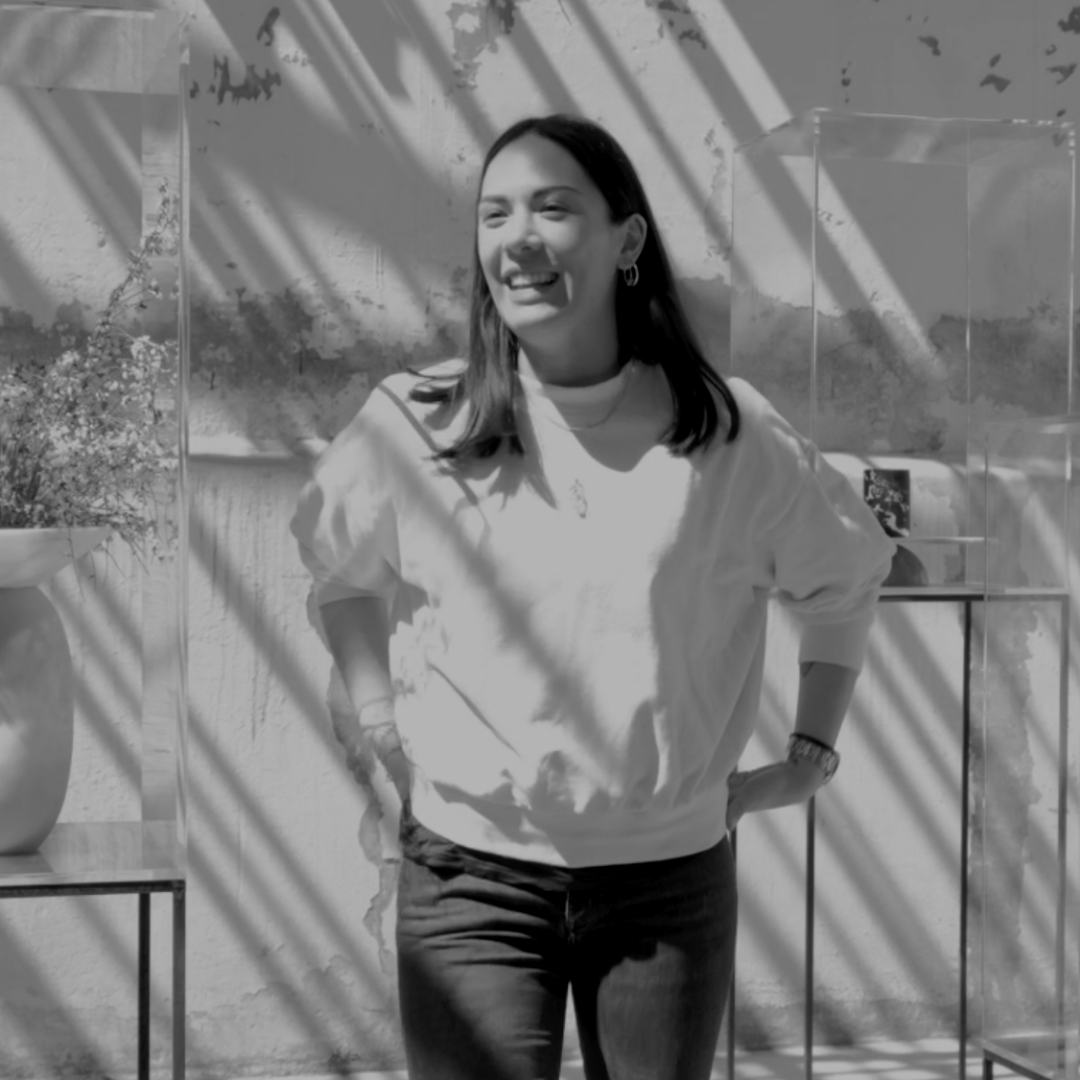
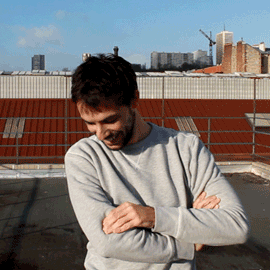

_new.png)

